Emojis Across Borders: A Journey
From Origins To 2024 Trends
Emojis have become a ubiquitous form of online communication (about 92% of all people online use emoji). They are heavily influenced by trends, constantly evolving in meaning, and often varying significantly across cultures and generations.
Historical Roots
In the beginning, before emojis came onto the scene, emoticons like :-) and :-( had served as text-based symbols to convey emotions in place of words.
In 1999, Japanese artist Shigetaka Kurita created the first emojis as a new way to express information. Inspired by weather pictograms and Japanese manga's symbolic characters, Kurita designed an original set of 176 emojis, now a part of the permanent collection at New York's Museum of Modern Art.
Emojis quickly became popular in Japan since they appeared on mobile phones. The first American company to recognize their potential was Google, and in 2007, it petitioned to get emojis standardized by the Unicode Consortium that soon made them accessible everywhere.
Since then, emojis became an important language of the digital age worldwide. The Unicode Consortium considers new emojis every year, which reflects the evolving cultural lexicon of emojis where anyone can suggest new additions.
In 1999, Japanese artist Shigetaka Kurita created the first emojis as a new way to express information. Inspired by weather pictograms and Japanese manga's symbolic characters, Kurita designed an original set of 176 emojis, now a part of the permanent collection at New York's Museum of Modern Art.
Emojis quickly became popular in Japan since they appeared on mobile phones. The first American company to recognize their potential was Google, and in 2007, it petitioned to get emojis standardized by the Unicode Consortium that soon made them accessible everywhere.
Since then, emojis became an important language of the digital age worldwide. The Unicode Consortium considers new emojis every year, which reflects the evolving cultural lexicon of emojis where anyone can suggest new additions.
Emojis Nowadays
In 2015, Oxford Dictionary named the emoji “face with tears of joy” 😂 Word of the Year.
There are currently over 3,000 emojis available on nearly every device we use. In fact, emojis integrated so deeply into our lives that our brains process them like words. Consequently, an emoji added to a sentence can change how we interpret the whole message.
Emojis serve to insert additional emotional meaning into a cold and emotionless text. They are commonly used to soften the impact of a negative message as well as to express positive feelings.
Moreover, people also like to use emojis to show that they belong to a community. Brands can handle this insight to include emojis into their marketing strategies, as using the right emojis in brand communications can resonate with your target audience. In addition, emojis often make you seem more friendly and open.
Emojis serve to insert additional emotional meaning into a cold and emotionless text. They are commonly used to soften the impact of a negative message as well as to express positive feelings.
Moreover, people also like to use emojis to show that they belong to a community. Brands can handle this insight to include emojis into their marketing strategies, as using the right emojis in brand communications can resonate with your target audience. In addition, emojis often make you seem more friendly and open.
2024 Emoji Trends
According to the Brandwatch Consumer Trends Report, the “loudly crying face” emoji 😭 takes the leading place among the top 10 most used emojis in media and entertainment conversations at the start of 2024.
Top 10 most used emojis and changes in their usage
Rank
Emoji
Change in popularity in %
1
😭
+10%
2
😂
+1%
3
❤️
-12%
4
🤣
+1%
5
🔥
-21%
6
😅
0%
7
🎶
+8%
8
🥰
-18%
9
✨
-6%
10
🙏
-4%
However, emoji usage is evolving across generations. Being aware of these nuances is important so you will not alienate your audience by appearing out of touch.
For example, while boomers and Gen X might use the “loudly crying face” emoji 😭 to express extreme sadness, millennials put it to use to express strong emotions (when something is beautiful or pure). Gen Z tends to use this emoji to express something is funny but is not meant to be.
Another example involves the “slightly smiling face” emoji 🙂 and “thumbs-up” emoji 👍 that Gen Z perceives as passive-aggressive. Instead, they prefer more enthusiastic smiley faces 😊 to add emotional clarity.
Similarly, emoji usage varies across different countries, reflecting diverse cultural interpretations and expressions:
For example, while boomers and Gen X might use the “loudly crying face” emoji 😭 to express extreme sadness, millennials put it to use to express strong emotions (when something is beautiful or pure). Gen Z tends to use this emoji to express something is funny but is not meant to be.
Another example involves the “slightly smiling face” emoji 🙂 and “thumbs-up” emoji 👍 that Gen Z perceives as passive-aggressive. Instead, they prefer more enthusiastic smiley faces 😊 to add emotional clarity.
Similarly, emoji usage varies across different countries, reflecting diverse cultural interpretations and expressions:
- The “eyes” emoji 👀 is more often used in the US.
- The “thumbs up” emoji 👍 is more popular in the UK.
- In the APAC region and Spain, the “pleading face” emoji 🥺 and “smiling face with heart-eyes” emoji 😍 are more popular than in other regions.
- French people opt for the “winking face” emoji 😉.
- In Germany, the “smiling face with the smiling eyes” 😊 emoji is high-ranking.
That is why is important to know how your target audiences are expressing themselves online to avoid misunderstanding and effectively engage with them using the appropriate emojis.
